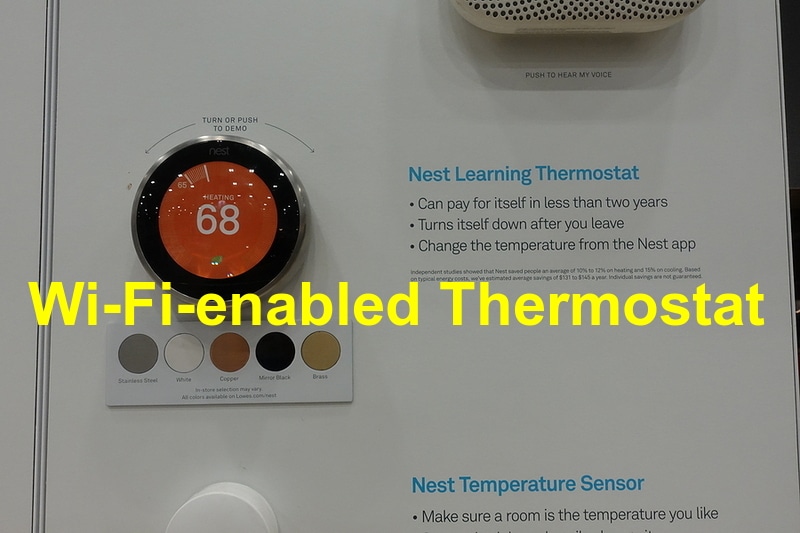Should you invest in a Wi-Fi-enabled thermostat? Let’s explore the advantages and disadvantages to help you decide if it’s the right choice for your home and lifestyle:
Pros of Wi-Fi-Enabled Thermostats:
- Remote Control: Wi-Fi thermostats allow you to adjust your home’s temperature remotely using a smartphone app or a computer. This feature is convenient if you want to change settings while away from home.
- Energy Efficiency: Many Wi-Fi thermostats offer energy-saving features like programmable schedules and learning algorithms. They can adapt to your preferences and adjust heating and cooling accordingly, potentially reducing energy consumption and costs.
- Convenience: You can set schedules, change settings, and monitor your home’s temperature from anywhere. This flexibility can be especially helpful for frequent travelers or those with varying schedules.
- Smart Home Integration: Wi-Fi thermostats often integrate with smart home ecosystems like Amazon Alexa, Google Assistant, or Apple HomeKit. This allows for voice control and seamless integration with other smart devices in your home.
- Usage Reports: Some Wi-Fi thermostats provide usage reports and insights, helping you track and analyze your energy consumption. This data can guide you in making more energy-efficient choices.
- Remote Monitoring: If you’re away and concerned about extreme temperatures or heating/cooling system issues, Wi-Fi thermostats enable remote monitoring and notifications.
Cons of Wi-Fi-Enabled Thermostats:
- Cost: Wi-Fi thermostats tend to be more expensive upfront than traditional thermostats. However, the potential energy savings can offset this cost over time.
- Complexity: The advanced features and settings of Wi-Fi thermostats may be overwhelming for some users. Setup and programming may require more technical knowledge.
- Power Outages: During a power outage, Wi-Fi thermostats may lose connectivity and their programmed schedules. You’ll need to reset them once power is restored.
- Privacy Concerns: Using Wi-Fi-connected devices means your thermostat could potentially be vulnerable to hacking or privacy breaches. To mitigate this risk, ensure your Wi-Fi network and thermostat have strong security measures in place.
- Compatibility: Not all heating and cooling systems are compatible with Wi-Fi thermostats. Before purchasing one, verify that it will work with your HVAC system.
- Regular Updates: Wi-Fi thermostats may require firmware updates to maintain functionality and security. You’ll need to stay on top of these updates to ensure your thermostat operates optimally.
In summary, the decision to buy a Wi-Fi-enabled thermostat depends on your preferences, lifestyle, and budget. If remote control, energy efficiency, and convenience are priorities, a Wi-Fi thermostat may be a worthwhile investment. However, consider the potential downsides, such as cost and complexity, and ensure it’s compatible with your HVAC system before making a decision.
References: FamilyHandyman, ConsumerReports

